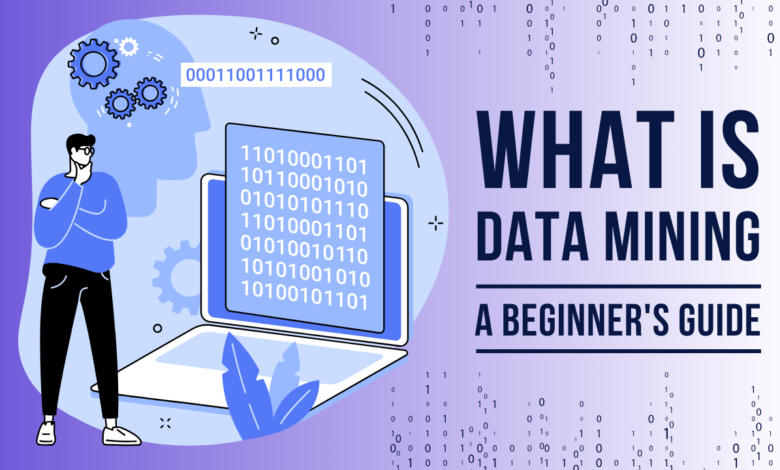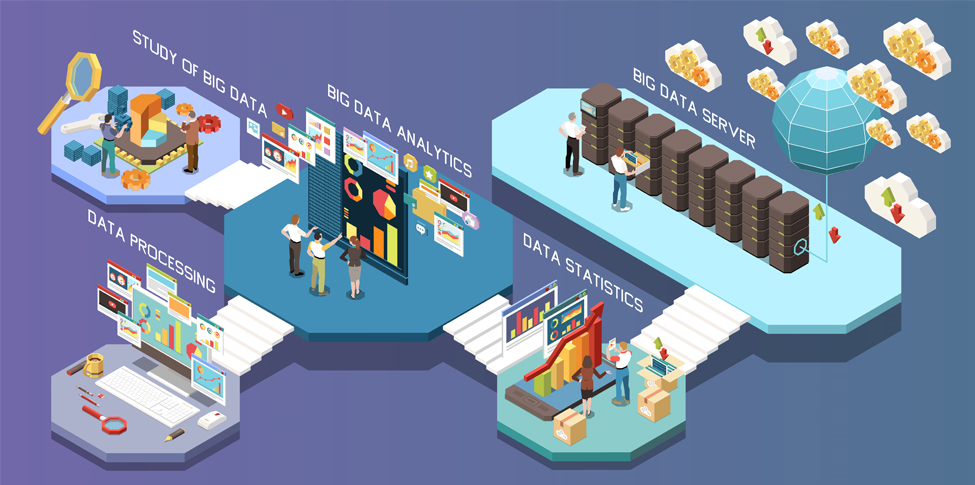What is Data Mining

What is Data Mining? An In-Depth Guide
“Discover the world of data mining, its importance, techniques, applications, and future trends in this comprehensive guide. Learn how data mining can help your business thrive.”
Introduction:
In today’s data-driven world, where information is being generated at an unprecedented rate, the ability to understand and effectively utilize this vast amount of data is crucial. This is where data mining, the process of discovering patterns and knowledge from large amounts of data, comes into play. These data sources can include databases, data warehouses, the Internet, and other data repositories.
What is Data Mining?
Data mining involves examining large pre-existing databases to generate new information. It uses sophisticated data analysis tools to discover previously unknown, valid patterns and relationships in large data sets. These tools can include statistical models, mathematical algorithms, and machine learning methods.
The Importance of Data Mining:
Data mining is essential for several reasons:
- Enhances Decision Making:
Data mining helps organizations make informed decisions by uncovering hidden patterns. - Identifies Trends and Patterns:
Helps identify future trends by analyzing past data. - Improves Customer Relationships:
By understanding customer needs and behaviors, businesses can tailor their strategies to meet customer demands better. - Optimizes Operations:
Helps streamline operations by identifying inefficiencies.
The Data Mining Process:
Data mining involves several steps to ensure the extracted information is accurate and valuable. These steps include:
- Data Cleaning: Removing noise and inconsistent data.
- Data Integration: Combining data from multiple sources.
- Data Selection: Choosing relevant data for the analysis.
- Data Transformation: Converting data into appropriate forms for mining.
- Data Mining: Applying algorithms to extract patterns.
- Pattern Evaluation: Identifying exciting patterns representing knowledge.
- Knowledge Presentation: Presenting mined knowledge in an understandable format.
Techniques of Data Mining:
Several techniques are used in data mining, each serving different purposes. Some of the most common techniques include:
- Classification:
Assigning items to predefined categories or classes. - Clustering:
Grouping a set of objects in such a way that objects in the same group are more similar to each other than to those in other groups. - Association Rule Learning:
Discovering exciting relations between variables in large databases. - Regression:
Identifying the relationships between variables. - Anomaly Detection:
Identifying rare items, events, or observations that raise suspicions by differing significantly from most of the data.
Applications of Data Mining:
Data mining is used in various industries to drive better decision-making and to uncover insights that can lead to significant business advantages. Some critical applications include:
- Retail: Understanding consumer buying patterns to manage inventory and improve sales strategies.
- Banking: Detecting fraudulent transactions and managing risk.
- Healthcare: Predicting disease outbreaks and understanding patient behaviors.
- Telecommunications: Improving service quality and customer satisfaction by analyzing usage patterns.
- Marketing: Crafting targeted marketing campaigns based on customer data analysis.
Challenges in Data Mining:
Despite its benefits, data mining presents several challenges:
- Data Quality: Inaccurate data can lead to incorrect conclusions.
- Privacy Concerns: Mining personal data can lead to privacy issues.
- Complexity: Requires sophisticated technology and expertise.
- Integration: Combining data from different sources can be complex and time-consuming.
Data Mining Tools:
Several tools and software are available to facilitate the data mining process. Some popular ones include:
- Rapid Miner: Provides an integrated environment for machine learning, data mining, text mining, and predictive analytics.
- WEKA: A collection of machine learning algorithms for data mining tasks.
- KNIME: An open-source platform for data analytics, reporting, and integration.
- SAS Enterprise Miner: A powerful data mining software from SAS.
Future of Data Mining:
The future of data mining is promising, with advancements in technology driving its evolution. Some trends to watch out for include:
- Integration with AI: Combining data mining with artificial intelligence to enhance predictive analytics.
- Big Data: Handling larger and more complex datasets efficiently.
- Cloud Computing: Leveraging the cloud for scalable data mining solutions.
- Enhanced Data Privacy: Developing methods to protect data privacy while extracting valuable insights.

Conclusion:
Data mining is not just a tool but a catalyst for transformation. By understanding and utilizing data mining techniques, businesses can make more informed decisions, identify new opportunities, and gain a competitive edge. As technology advances, the potential for data mining to transform industries and improve lives is not just a possibility but a promise that will continue to grow.
FAQs
Q1: What is data mining in simple terms?
Data mining analyzes large datasets to find patterns, trends, and helpful information.
Q2: How does data mining differ from data analysis?
Data mining focuses on discovering unknown patterns and relationships, whereas data analysis often involves summarizing existing information.
Q3: Can data mining invade privacy?
Yes, if not handled responsibly, data mining can lead to privacy concerns, especially when personal data is involved.
Q4: What industries benefit the most from data mining?
Retail, banking, healthcare, telecommunications, and marketing are some sectors that benefit significantly from data mining.
Q5: Is data mining only for large businesses?
No, enterprises of all sizes can benefit from data mining. Smaller companies can use it to gain insights and remain competitive.





